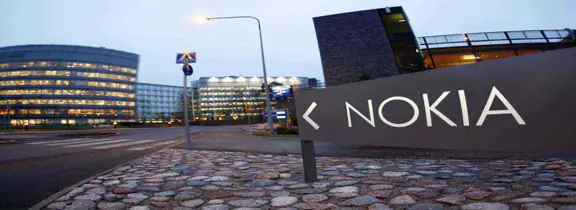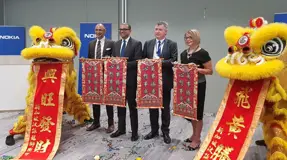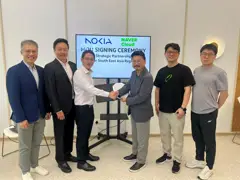Working at Nokia Singapore: Company History, Culture, Benefits, and Leadership
A Finnish multinational, Nokia, focuses on telecommunications, IT, and consumer electronics. With over 92,000 employees in 100+ countries and US$25 billion in annual revenues in 2020, Nokia is listed on the Helsinki and New York Stock Exchanges.
Renowned for its Inclusion & Diversity strategy, Nokia emphasizes an inclusive workplace, equal opportunities, and measurable progress targets through strategic investments. Aniday provides detailed insights into Nomura Singapore, covering its history, culture, benefits, and leadership.
General Information

Originally a pulp mill, Nokia transitioned through various industries. It played a pivotal role in mobile telephony standards like GSM, 3G, and LTE. In the late 1990s, Nokia dominated the global mobile market.
Though suffering some pitfalls throughout the years, in 2016, Nokia re-entered the global mobile market through a licensing arrangement with HMD Global. Nokia remains a major patent licensor and, as of 2018, they are the world's third-largest network equipment manufacturer.
Nokia, once a source of national pride for Finns, reached its peak in 2000, contributing significantly to the country's GDP, exports, and stock market capitalization.
History
-
1865-1922: Founding and Diversification
Founded in 1865 by Fredrik Idestam, Nokia established a pulp mill in Tampere, Finland. In 1871, Nokia Ab was formed, taking its name from the Nokia region's second pulp mill. In 1922, Nokia collaborated with Finnish Rubber Works and Kaapelitehdas, marking its foray into diverse industrial partnerships.
-
1967-1988: Corporate Consolidation and Expansion
Nokia Corporation is created in 1967 through the merger of Nokia, Kaapelitehdas, and Finnish Rubber Works. Under CEO Kari Kairamo's leadership in 1977, Nokia undergoes significant acquisitions. In 1987, Nokia acquires Schaub-Lorenz, discontinuing cable production. The company ventures into mobile telephony in 1988 by acquiring Ericsson's Information Systems division, despite facing the tragic suicide of CEO Kairamo.
-
1990s: Navigating Challenges and Shifting Focus
Facing economic challenges in the 1990s, Nokia sells Nokian Tyres and Nokia Data. In 1992, Jorma Ollila assumes the role of CEO, steering Nokia's focus towards the telecommunications industry.
-
2000-2010: Mobile Dominance and Market Challenges
In the early 2000s, Nokia becomes a global mobile phone leader, overtaking Motorola in 1998 and holding a 30% market share by 2000. The company experiences a brief market share drop in 2004 but rebounds to an all-time high in 2007.
Jorma Ollila becomes chairman in 2006, and Olli-Pekka Kallasvuo takes over as CEO. Nokia introduced Ovi in 2006 and releases the Nokia 5800 XpressMusic in 2008.
-
2010-2020: Transformation and Network Focus
Entering the 2010s, Nokia faces challenges, prompting a focus on mobile phones, partnerships, and restructuring. In 2012, Nokia sells Qt and acquires full ownership of Nokia Siemens Networks. Microsoft acquires Nokia's mobile phone business in 2013, leading Nokia to shift its focus to networks and technologies. In 2016, Nokia re-enters the mobile market through a licensing arrangement with HMD Global. By 2018, Nokia becomes the world's third-largest network equipment manufacturer, reporting annual revenues of around €23 billion in 2020.
Company Culture

At Nokia, they pioneer B2B technology innovation, bringing networks and the cloud together for global digital advancement. Collaborating with customers and partners, they create future-proof digital services. Nokia's success lies in their open approach, welcoming minds that share their innovative thinking to turn ideas into reality. In this community, the world operates on open-source principles.
Corporate Social Responsibility (CSR)
Nokia's 2022 People & Planet report highlights digital's exponential potential in constructing a sustainable future. With escalating planetary pressures, stagnant productivity, and persistent inequality in opportunity access, the report maps Nokia's path to a sustainable future, placing digitalization at its core. The message is clear: Green and digital are inseparable.
Inclusion & Diversity Strategy
Their Inclusion & Diversity strategy sets Nokia apart from other industry players. For them, it's crucial that everyone can feel valued and has equal opportunities to progress within the company. They invest in R&D, set targets, and measure their progress.
They are focusing on these specific areas:
-
Diversifying Nokia’s talent pool: They have set ambitious targets for hiring and retaining women.
-
Creating a culture of high inclusion: Their aim is to see year-on-year improvements in the employee inclusion experience across every business group and function.
-
Being the preferred choice for customers & investors by role modeling best inclusion and diversity practices: They strive to score above the industry average in external benchmarks such as Workplace Pride and Bloomberg, making the outcomes available for their key stakeholders.
Employee Benefits

Global 'New Child Leave' Policy:
-
Minimum of 90 calendar days (3 calendar months) of paid family leave for all new parents.
-
Available to any Nokia employee regardless of gender, supporting births and adoptions.
-
Resources provided for a smooth transition back to work as part of the "Come Back with Confidence" Initiative.
Global Life Insurance:
-
Life Insurance provided to every Nokia employee worldwide.
-
Financial support for loved ones in the event of an employee's death, equivalent to not less than one year's capped gross annual base salary.
Key Priorities, Measures, and Actions for the People Strategy:
-
Develop careers and opportunities for growth aligned with future skills.
-
Supportive leaders focusing on leading, influencing, and inspiring.
-
Empower flexible, hybrid working arrangements for optimal employee performance.
-
Encourage employee volunteering and community engagement to enhance well-being.
-
Foster diverse and inclusive teams for innovative problem-solving.
-
Ensure physical and psychological safety for trusted partnerships.
-
Remove growth barriers by simplifying processes and focusing on outcomes.
Leadership

-
Daniel Jaeger - Vice President South East Asia: bringing over two decades of industry expertise. In his career, he has held leadership positions in sales, business development, and regional management. With his extensive experience, with professional engagements in various countries and markets, he brings diverse viewpoints to the table.
-
Ming Kin Ngiam - Country Manager: Specializing in successful leadership, innovation, and entrepreneurship, he brings to the table a wealth of experience in strategic development and management, coupled with exceptional interpersonal and communication skills. With a background rooted in robust customer service and engineering, his expertise extends to diverse areas such as business development, finance, sales, and marketing.
In Summary
Nokia, a Finnish multinational in telecommunications and consumer electronics, employs 92,000+ people across 100+ countries, generating €23 billion in annual revenues (2020). Notable for its Inclusion & Diversity strategy, Nokia prioritizes equal opportunities and measurable progress targets. Aniday provides insights into Nomura Singapore's history, culture, benefits, and leadership.
Aniday's HR Services
Headhunting Service
Find and recruit quality candidates in just 1 week! Supported by 40,000 experienced headhunters in IT, Finance, Marketing… capable of recruiting in any region.
Headhunting Service ➔Employer of Record (EOR) Service
On behalf of your business, we recruit employees and handle payroll without the need to establish a company in markets such as Vietnam, Singapore, Malaysia, India, Indonesia…
Employer of Record (EOR) Service ➔